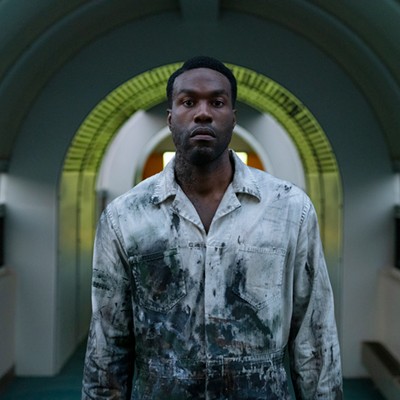The myth of the lone, misunderstood, genius artist toiling away in obscurity is a narrative that has come to overshadow " or at least dominate " the value we put on artists. That is, one has a tendency to view an artist's work based on the tragedy of his or her life story, and the more horribly things went for the artist the more fascinating the work tends to be.
For example, as unique and brilliant as Van Gogh's paintings are, we probably wouldn't like them nearly so much if he had died entirely sane, with both ears intact.
"Séraphine," a biopic of Séraphine Louis, also known as Séraphine de Senlis, presents a textbook example of the poverty stricken, misunderstood and largely ignored artistic genius. The French film screens Thursday through Sunday at the Oklahoma City Museum of Art.
The movie begins in 1914. Séraphine (French actor Yolande Moreau) lives in Senlis, a French town north of Paris. She squeaks by working as a cleaning lady for Madame Duphot (Geneviève Mnich), a wealthy widow who rents out her extra rooms, where Séraphine lives and paints in secret.
OUT OF TOWN
But because she resides in a small town, word about Séraphine gets out. Her boss, who considers herself something of an art appreciator, demands to see her work, which is immediately dismissed as insufficiently representational. Séraphine, who expected no better, goes on with her floor mopping.
But then Wilhelm Uhde (German actor Ulrich Tukur), an art collector who is among the first to buy works from Picasso, Rousseau and other modern artists, moves into the building for a short holiday. During a dinner party with his landlady, Uhde spots Séraphine's painting propped under a table. He buys it from Duphot on the spot, and later seeks out more of Séraphine's work.
World War I begins and Uhde, a German, is forced to flee France. Séraphine loses her job, and is forced to scrounge more than ever just to stay alive. On the other hand, with a war going on and nothing to do, she finds herself at liberty to paint all she wants. This goes on until 1927, when Uhde finally makes his way back to Senlis and finds Seraphine's painting has advanced beyond anything he could have imagined. He becomes her patron, promising Paris exhibitions, fame and riches.
Unfortunately, Séraphine's mental state hasn't improved along with her work, and she becomes increasingly unbalanced. Already devoutly religious, her obsession with the Virgin Mary takes on unhealthy dimensions, and she winds up confined to an asylum.
As far as biopics go, "Séraphine" is the best kind; there is none of the artificial sentimentalizing that riddled American offerings like "Walk the Line" or "Ray." There is very little attempt to mine her past for the roots of her artistic talent or mental illness, and the movie benefits from it.
It simply paints a portrait of a person with little material advantage who spends her life searching for consistent meaning. The stark, almost disconnected presentation of her search creates something profoundly touching and sad. "Mike Robertson












